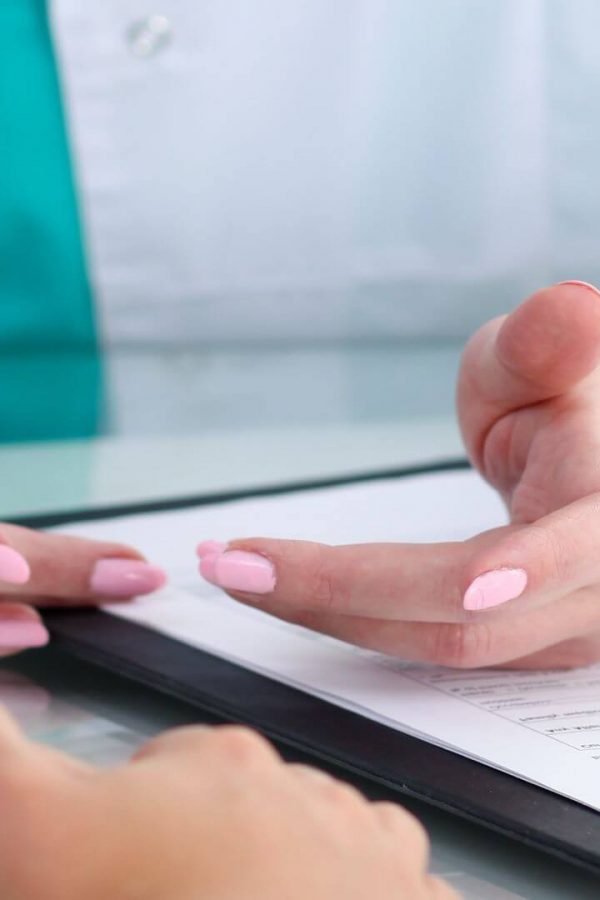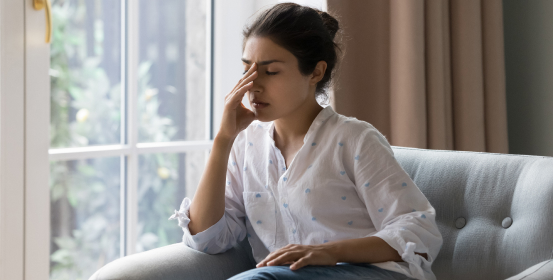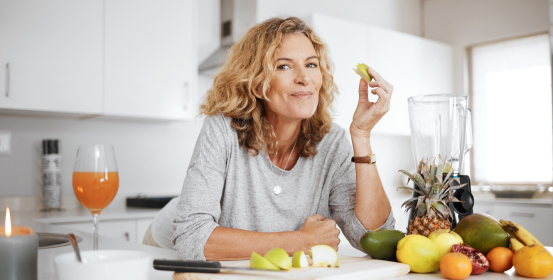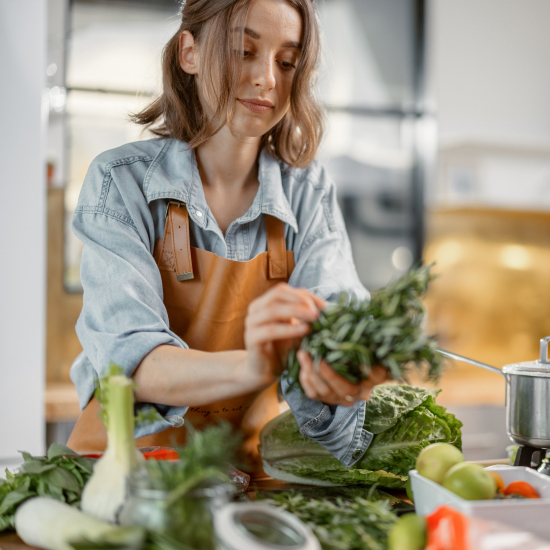Introduction
Proper patient preparation is one of the most important factors in a successful colonoscopy. Side-effects during the procedure of cleansing the bowel prior to a colonoscopy can have a negative impact on the patient’s ability to tolerate the procedure and on the effectiveness of the cleansing process itself (1). Inadequate cleansing of the bowels has an adverse effect on the entire colonoscopy procedure (2, 3) and can lead to lesions being overlooked during the procedure (4). If the patient is not adequately prepared for the colonoscopy, the procedure has to be repeated; this increases treatment costs unnecessarily and places an extra burden on the patient (5).
Bowel preparation for colonoscopy
The agents used to clear the bowel before a colonoscopy can be divided into three main categories:
- Hyperosmotic agents
These include mannitol, sorbitol, lactulose, magnesium sulphate and sodium phosphate. Hyperosmotic laxatives cause fluid and electrolyte displacement and are therefore not used for cardiac patients or patients suffering from kidney damage, decompensated cirrhosis or electrolyte disorders. Bacterial degradation of unabsorbed carbohydrates in the bowel can lead to the formation of explosive hydrogen compounds. This can be dangerous when using argon plasma, which is used in some instances during a colonoscopy in order to remove vascular changes or destroy residual adenomas (6).
Magnesium citrate can be used in younger patients, and has the advantage of being low cost. Sodium phosphate preparations are comparable in terms of effectiveness with polyethylene glycol (PEG) and magnesium citrate solutions, and are usually well-tolerated by patients (7). However, the use of sodium phosphate can lead to kidney damage or acute phosphate nephropathy, so it is not the ideal choice for clinicians. In cardiac patients with renal impairment, electrolyte disorders can occur. With approx. 3.3% of subjects, bowel preparation using certain osmotic laxatives can cause inflammation and erosion of the mucous membrane of the bowel (8, 9). There are no serious side-effects associated with the use of sodium sulphate or PEG (10). In chemical terms, Donat Mg is a mineral water that contains sodium, magnesium, bicarbonate and sulphate. Some studies have shown it to be an effective means of clearing the bowel without serious side-effects (11). - PEG-based agents
The second group of agents comprises polyethylene glycol (PEG) solutions. These are the most commonly used agents for pre-colonoscopy bowel preparation. PEG is a high molecular weight polymer that is not absorbed into the bowel and acts as an osmotic laxative that enables fluid and electrolytes to be retained in the bowel. PEG can also be used in combination with other laxatives to reduce the quantity of PEG agents required. It does not damage the mucous membrane of the bowel and causes minimal osmotic displacement of electrolytes in the colon. It is also a safer agent for patients with renal impairment, heart failure, decompensated cirrhosis of the liver or electrolyte disorders (12, 13). - Stimulant laxatives
Stimulant laxatives were often used in the past to stimulate peristalsis and remove fluid from the intestines. However, they were not very effective in preparing the intestines for colonoscopy procedures and are therefore seldom used today.
Nowadays we more commonly use PEG solutions in lower doses (2 litres) in combination with electrolytes and Vitamin C (Moviprep; 14, 15).
Preparing patients for colonoscopy in the national bowel and rectal cancer screening programme (SVIT)
In the national bowel and rectal cancer screening programme (SVIT), we opted for a combination of 2 litres of Donat Mg (an osmotic laxative) and 2 litres of Moviprep (a PEG solution). We have included in the analysis all subjects aged between 50 and 69 who tested positive under a faecal immunochemical test (FIT) and who required a colonoscopy. The analysis included subjects involved in the first cycle of the SVIT programme from April 2009 to April 2011. Colonoscopies were performed by 55 gastroenterologists at 23 accredited endoscopy centres in Slovenia. The Ottawa system was used to assess the success of bowel preparation (16). We tested the use of this system in our pilot project (17).
Table 1. Ottawa Bowel Preparation Scale
| Clean colon | excellent visibility of the bowel |
| Unclean but good visibility (<5mm) | minor uncleanliness of the bowel that could obscure changes, <5mm |
| Unclean and poor visibility (>5mm) | colon more unclean, stool residues could obscure changes, >5mm |
| No visibility | widespread stool residues, investigation impossible |
Instructions to patients prior to a colonoscopy in the SVIT programme
- In the week prior to the procedure, do not consume any raw vegetables, red-peeled fruit or vegetables (e.g. tomato, red pepper, red apple, grapes, etc.), fruits with seeds (e.g. kiwi, raspberries, etc.), wholegrain flour products, seeds, dried fruit or corn.
- Eat white bread and white flour products, peeled potatoes, lean meat and fish, boiled vegetables and compotes.
- Make sure you drink enough liquid (at least 2 litres a day).
The liquids you consume should be clear and without any red colouring (e.g. beetroot or blueberry juice). You may consume your last meal of solid food 24 hours before the colonoscopy. For this meal, you may eat: white bread, pastries and pasta made from white flour, thin jam free of pieces of fruit or seeds, honey, lean meat or ham, fish, pudding, pancakes, clear soups and fruit juices, corn and rice flakes, sponge cake, skimmed milk yoghurt, tea and coffee without milk. For this meal, you may not eat: food containing wholegrain flour or bran, muesli, red-coloured food, fruit and vegetables, thick juices. You may not consume any solid food in the 24 hours prior to the colonoscopy.
- You may consume only thin liquids in unlimited quantities (clear, colourless fruit juices, clear soups, tea and coffee without milk, sports drinks in the recommended quantities). Do not consume milk, dairy products or thick juices. During the day, you must drink 2 litres of Donat Mg, from which the CO2 must be removed.
Further instructions depend on the time of day at which the procedure is to be performed.
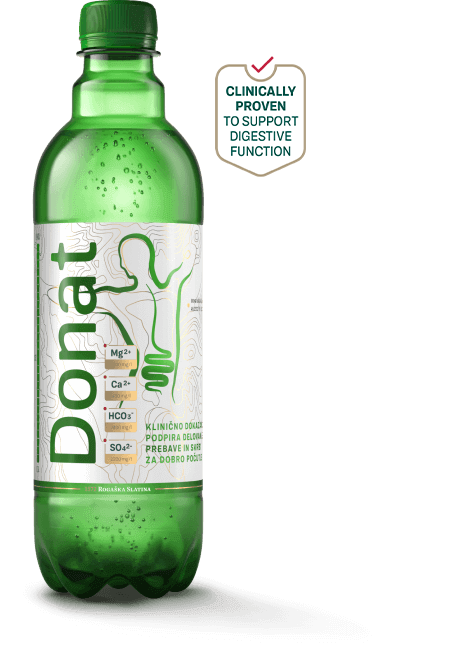
Morning procedure
Begin taking the Moviprep solution at 8 pm on the evening before your colonoscopy. As instructed, drink the entire quantity of the solution, as well as one litre of liquid (mineral water, water, colourless fruit juices, coffee or tea without milk). In the morning, take any medicines you need to take (except for those you may not take because of the procedure), but with as little water as possible. Begin drinking the second litre of solution in the early morning 5 hours before the colonoscopy is due to start. Drink 2.5 dl of the solution every 15 minutes so that you consume a full litre in approx. one hour. After you have drunk the second litre of solution, drink another 500 ml of clear liquid of your choice.
Afternoon procedure
Begin taking the Moviprep solution 8 hours before your colonoscopy. Drink the entire quantity of the solution, as well as one litre of liquid (mineral water, water, colourless fruit juices, coffee or tea without milk). In the morning, take any medicines you need to take (except for those you may not take because of the procedure). Begin drinking the second litre of solution 5 hours before the colonoscopy is due to start. Drink 2.5 dl of the solution every 15 minutes so that you consume a full litre in approx. one hour. After you have drunk the second litre of solution, drink another 500 ml of clear liquid of your choice. Diarrhoea will reappear and last approx. 2 hours.
Results
We performed 13,914 colonoscopies in the first cycle of the SVIT programme (April 2009 to April 2011). Men outnumbered women among those undergoing the procedure (7,746 men (55.67%) vs 6,168 women (44.33%)). Excellent bowel preparation was achieved in 11,484 colonoscopies (82.61%), good bowel preparation (< 5 mm) in 1,894 colonoscopies (13.62%), poor bowel preparation (> 5 mm) in 439 colonoscopies (3.16%) and inadequate bowel preparation in 85 colonoscopies (0.61%). Bowel preparation data is missing for 12 colonoscopies (Table 2). Better bowel preparation results were found among those subjects who underwent a colonoscopy in the afternoon and among younger subjects (Table 3, p < 0.001). Of those with poor bowel preparation, 44 subjects required a total of 47 repeat colonoscopies to achieve adequate bowel visibility. In half these patients, we detected adenomas that could not be seen during the first colonoscopy. We encountered no serious complications/side-effects from colonoscopy preparation in any of the subjects.
Table 2. Results of patients’ bowel preparation
| number of | proportion | |
|---|---|---|
| Clean bowel | 11.785 | 82.6% |
| Unclean but good visibility (<5mm) | 1.948 | 13.6% |
| Unclean and poor visibility (>5mm) | 457 | 3.2% |
| No visibility – investigation impossible | 88 | 0.6% |
| Total | 14.272 | 100.0% |
Table 3. Results of adequacy of preparation by sex and age
| good | bad | ||
|---|---|---|---|
| Sex | moški | 96.2% | 3.8% |
| ženske | 96.1% | 3.9% | |
| Age | 50 – 54 | 96.7% | 3.3% |
| 55 – 59 | 96.4% | 3.6% | |
| 60 – 64 | 96.3% | 3.7% | |
| 56 + | 96.2% | 4.8% | |
| Total | 96.2% | 3.8% |
Discussion
Belsey et al. (14) have published a meta-analysis of 24 studies of colonoscopy preparation using PEG, and found excellent and good bowel preparation in 72% of subjects (from 25 to 100%). This demonstrates that it is not always possible to clear the bowels adequately prior to a colonoscopy.
We used a combination of an osmotic laxative (Donat Mg) and a PEG solution (Moviprep) for the first time in the SVIT programme. We found excellent and good bowel preparation in 13,378 patients (96.23%). This is an extremely good result produced by a combination of two efficient laxatives, a sufficient quantity of fluid and the use of separate instructions for morning colonoscopies (splitting the PEG solution dose into evening and morning doses).
The meta-analysis produced by Kilgore et al., which covered 1,232 patients, found that the odds ratio (OR) was 3.7 times higher for a well-prepared bowel if a single dose was split into two doses. Patients also reported that, with a split dose, they felt less nausea and felt readier to repeat the colonoscopy preparations if required.
The other important information included in the instructions is that the last litre of Moviprep must be consumed 5 hours before the colonoscopy. Church (19) and Siddiqui (20) have established an inverse relationship between the time of the last dose of the bowel preparation solution and the start of the colonoscopy.
In our study, bowel preparation was better among subjects undergoing a colonoscopy in the afternoon and among younger subjects. Subjects that drank the last dose of Moviprep 5 hours before the colonoscopy did not report any difficulties en route to the endoscopy centre. The nationwide distribution of endoscopy centres means that no one required more than 2 hours to get to a centre from where they live.
It is also very important to note that no complications or serious side-effects have been associated with the Slovenian system of colonoscopy preparation. Between 1997 and 2002, the US Food and Drug Administration (21) received a report of 100 cases of serious side-effects among patients undergoing bowel-cleansing prior to a colonoscopy. In 30 cases, complications arose during preparation that led to the patient’s death: perforation of the oesophagus from vomiting, pulmonary aspiration, toxic colitis, severe cardiac arrhythmia, hyponatraemia and hypernatraemia.
Subsequent to the first cycle of the SVIT programme, and based on the good results obtained from our method of colonoscopy preparation, we have since rolled out this preparation method for other patients undergoing regular diagnostic colonoscopies.
References
- Tepeš B, Stefanovič M, Bračko M, Frković Grazio S, Maučec Zakotnik J, Novak Mlakar D, et al. First results of National colorectal screening programme SVIT. Zdravstveni vestnik, 2010; 79:403–411.
- Sanaka MR, Shah N, Mullen KD, Ferguson DR, Thomas C, McCullough AJ. Afternoon colonoscopies have higher failure rates than morning colonoscopies. Am J Gastroenterol, 2006; 101:2726–2730.
- Bernstein C, Thorn M, Monsees K, Spell R, O’Connor JB. A prospective study of factors that determine cecal intubation time at colonoscopy. Gastrointest Endosc, 2005; 61:72–75.
- Rex DK, Bond JH, Winawer S, Levin TR, Burt RW, Johnson DA, et al. Quality in the technical performance of colonoscopy and the continuous qualityimprovement process for colonoscopy: recommendations of the U.S. Multi- Society Task Force on Colorectal Cancer. Am J Gastroenterol, 2002; 97:1296–1308.
- Harewood GC, Wiersema MJ, Melton LJ. A prospective controlled assessment of factors influencing acceptance of screening colonoscopy. Am J Gastroenterol, 2002; 97:3186–3194.
- Bigard MA, Gaucher P, Lassalle C. Fatal colonic explosion during colonoscopic polypectomy. Gastroenterology, 1979; 77:1307–1310.
- Regev A, Fraser G, Delpre G, Leiser A, Neeman A, Maoz E, et al. Comparison of two bowel preparations for colonoscopy: sodium picosulphate with magnesium citrate versus sulphate-free polyethylene glycol lavage solution. Am J Gastroenterol, 1998; 93:1478–1482.
- Palmadottir VK, Gudmundsson H, Hardarson S, Arnadottir M, Magnusson T,
Andresdottir MB. Incidence and outcome of acute phosphate nephropathy
in Iceland. PLoS One, 2010; 5:e13484. - Rejchrt S, Bures J, SirokyM, Kopacova M, Slezak L, Langr F. A prospective,
observational study of colonic mucosal abnormalities associated with orally
administered sodium phosphate for colon cleansing before colonoscopy.
Gastrointest Endosc, 2004; 59:651–654. - Di Palma JA, Rodriguez R, McGowan J, Cleveland MB. A randomized clinical
study evaluating the safety and efficacy of a new, reduced-volume, oral
sulfate colon-cleansing preparation for colonoscopy. Am J Gastroenterol,
2009; 104:2275–2284. - Lavrič J, Tretjak Ž, Skalicky M. Comparison of different bowel preparing
solutions. Zdravstveni vestnik, 1991; 60:227–228. - Di Palma JA, Marshall JB. Comparison of a new sulfate-free polyethylene
glycol electrolyte lavage solution versus a standard solution for colonoscopy
cleansing. Gastrointest Endosc, 1990; 36:285–289. - Hsu CW, Imperiale TF. Meta-analysis and cost comparison of polyethylene glycol lavage versus sodium phosphate for colonoscopy preparation.Gastrointest Endosc, 1998; 48:276–282.
- Belsey J, Epstein O, Heresbach D. Systematic review: oral bowel preparation for colonoscopy. Aliment Pharmacol Ther, 2007; 25:373–384.
- Bitoun A, Ponchon T, Barthet M, Coffin B, Dugue´ C, Halphen M. Norcol
Group. Results of a prospective randomised multicentre controlled trial
comparing a new 2-L ascorbic acid plus polyethylene glycol and electrolyte
solution vs. sodium phosphate solution in patients undergoing elective colonoscopy. Aliment Pharmacol Ther, 2006; 24:1631–1642. - Rostom A, Jolicoeur E. Validation of a new scale for the assessment of bowel
preparation quality. Gastrointest Endosc, 2004; 59:482–486. - Tepeš B, Štabuc B, Stefanovič M, Bračko M, Frković Grazio S, Novak Mlakar D, Maučec Zakotnik J. Faecal immunochemical test-based colorectal cancer screening programme SVIT in Slovenia: pilot phase. Eur J Cancer Prev, 2014, 23:235–239.
- Kilgore TW, Abdinoor AA, Szary NM, Schowengerdt SW, Yust JB, Choudhary A, et al. Bowel preparation with split-dose polyethylene glycol before colonoscopy: a meta-analysis of randomized controlled trials.Gastrointest Endosc, 2011; 73:1240–1245.
- Church JM. Effectiveness of polyethylene glycol antegrade gut lavage bowel preparation for colonoscopy: timing is the key. Dis Colon Rectum, 1998; 41:1223–1225.
- Siddiqui AA, Yang K, Spechler SJ, Cryer B, Davila R, Cipher D, et al. Duration of the interval between the completion of bowel preparation and the start of colonoscopy predicts bowel preparation quality. Gastrointest Endosc, 2009; 69:700–706.
- Hookey LC, Depew WT, Vanner S. The safety profile of oral sodium
phosphate for colonic cleansing before colonoscopy in adults. Gastrointest
Endosc, 2002; 56:895–902.
Choose chapter:
